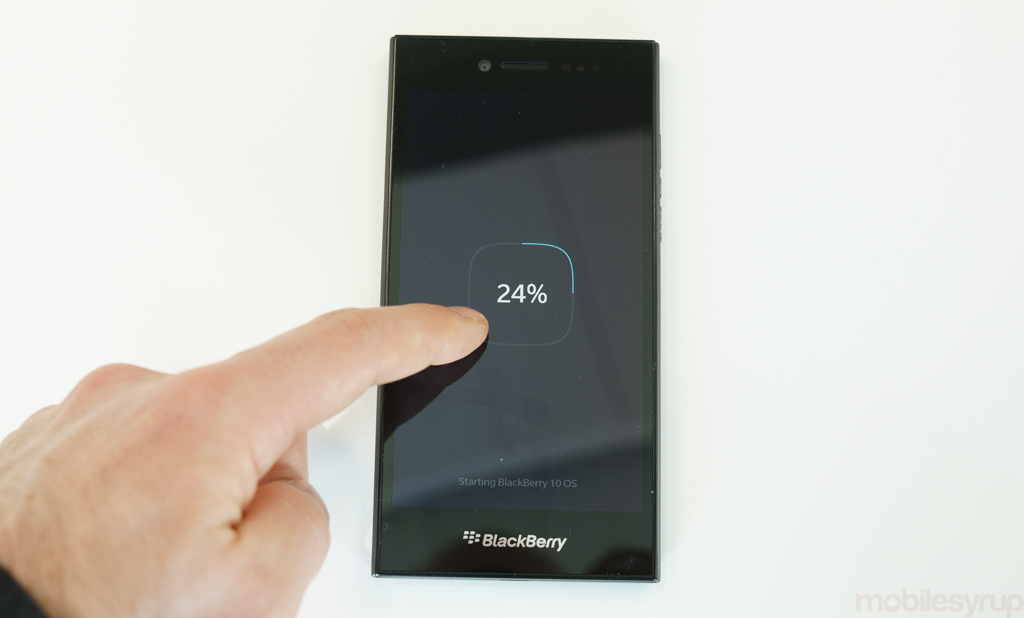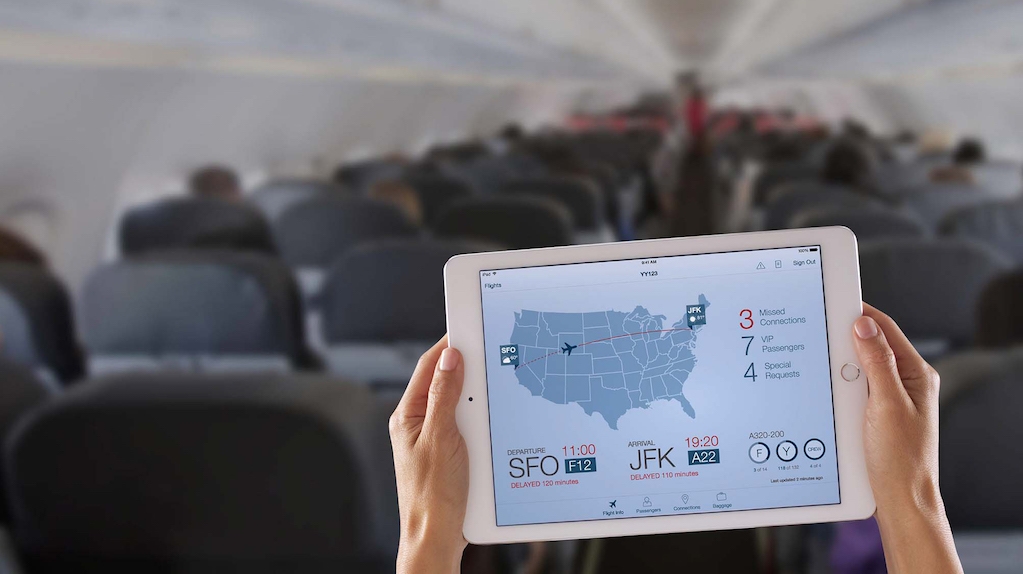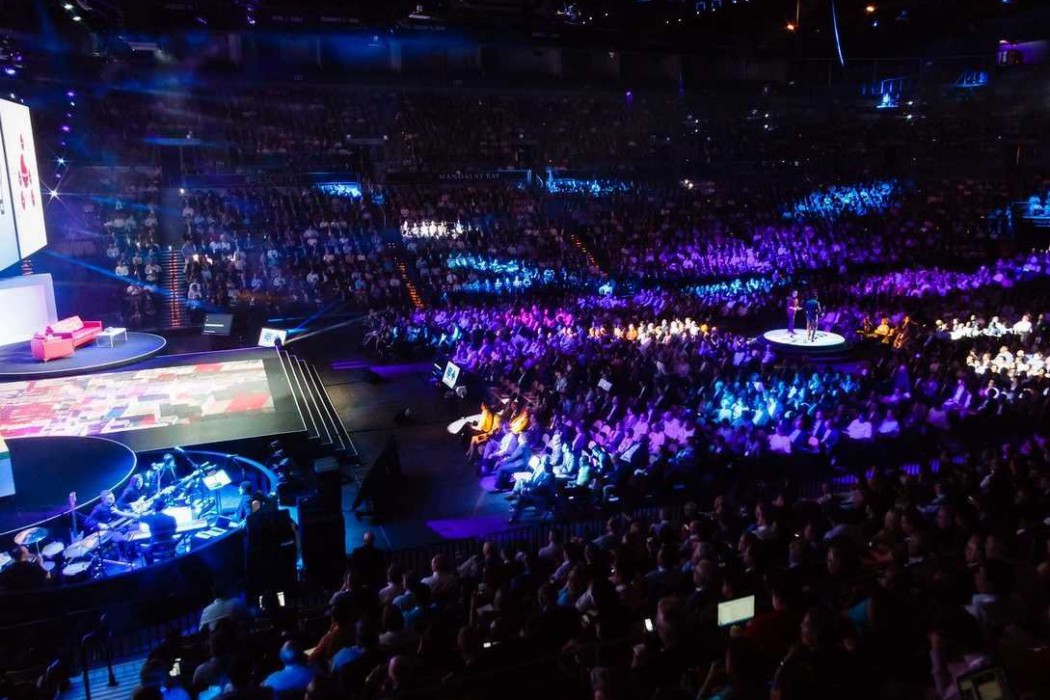
Welcome to Tête-à-Tête, a series where two of our writers converse on interesting topics in the mobile landscape — through chat. Think of it as a podcast for readers.
This week, Douglas Soltys and Daniel Bader, returned from trips to two very different conferences, discuss the changing world of enterprise software.
Douglas Soltys: Daniel, dear Daniel, I fear we shall never meet in person again. I have returned home from Las Vegas, spending 5 days with IBM learning about new ways to work, only to find you have trekked to Barcelona to learn about Spanish cuisine (oh, and phones and stuff). Only this brief correspondence now ties us together.
Vegas (VEGAS!) was interesting, as IBM had convinced over 21,000 people to come talk mobile and cloud. IBM has refreshed its MobileFirst product (nee, MaaS360), and the results are compelling for large enterprise. There were also ten IBM-made apps for iOS on-hand, the early results of the two companies’ newfound partnership.
But Vegas was also interesting because Google decided to wait for IBM’s mammoth conference to drop news of its Android for Work program (oh Google, you cad). The program, designed to provide enterprises with better Android tools, follows the classic Google partnership model, and lies in direct contrast to IBM and Apple choosing to work with the two leaders in their respective spaces.
Despite the differences in approach, both are notable as serious initiatives by Google and Apple to embed in enterprise. So is enterprise the hot new space in mobile?
Daniel Bader: Douglas, Barcelona is full of people. It’s a revelrous, tumultuous, and often tremulous place to walk, eat and observe other people.
And one thing I saw a lot of, as I stopped momentarily to stare at the throngs at La Plaça de Catalunya, were smartphones. I caught myself wondering: all of these people, in some way, perform work functions on their phones. And Android is much more popular in Spain, as in other parts of Europe, than iOS.
There are two reasons Android for Work is important. For one, it ostensibly allows Google to catch Samsung before it becomes the de facto enterprise standard-maker in the Android space; but by partnering with Samsung to bring basic KNOX support to Android, along with other MDM providers like BlackBerry, it privileges Android smartphones that would otherwise be barred from many workplaces.
The need for containers is obvious: Android, more so than any other OS, exposes app data to the system, and because of its open nature can leak data to any malware that cares to infect its host, if that app is compromised. Android for Work ensures that in the event of a system breach, corporate data is kept separate and dependably secure. But Google knew it couldn’t go it alone, hence the minute-long list of partners.
What intrigues me most about Android for Work is its simplicity: it doesn’t take much to set up, both from an IT and user perspective, and it will help keep both parties happier, longer. It’s no longer simply enough to say one’s business supports BYOD, because millions of people use Android phones, and those weren’t very well supported until now.
Douglas Soltys: Your point about the need for and Android enterprise container is astute, as is the difficulty Samsung faces differentiating on a platform it doesn’t control. Samsung’s efforts with KNOX, and its partnership with BlackBerry, become greatly diminished when essentially all modern Android devices have access to the broad portfolio of services provided by Android for Work.
Samsung’s struggles to differentiate on Android makes BlackBerry’s announcement to go cross-platform all the more interesting. Eschewing any one platform, BlackBerry has unbundled core features from BlackBerry 10, and included them with its portfolio of BBM and MDM (mobile device management) services in the BlackBerry Experience Suite. It’s similar to Microsoft’s ‘mobile-first’ strategy, but without any significant business incentive to grow OS market share, like Microsoft must with Windows 10. BlackBerry 10, and the hardware that runs it, can now be seen as a value-add to BlackBerry’s core business of enterprise services – if you want a keyboard with your mobile (or a utility belt, or a square screen), buy BlackBerry, but the ‘BlackBerry experience’ now lives on all devices.
It’s a bold and unprecedented move for the company (no, BlackBerry Connect doesn’t count), and one that could make BlackBerry relevant again for business users that crave the Hub, but are unwilling to give up their iPhone or Galaxy smartphone – especially those with IT admins already running BES12. Daniel, did BlackBerry just ‘leapfrog’ its enterprise competition?
Daniel Bader: Doug, there’s an interesting story about the venue in which BlackBerry decided to host its Mobile World Congress breakfast. Seven years ago, a complex of nondescript blue office buildings sprouted up, as it often does, around the Fira Gran Via, a popular conference centre in the southwest of Barcelona. The buildings were meant to house the Barcelona offices of large multinational companies. But when the Great Recession hit in ’08, many of the buildings’ floors remained empty, and still do today. As such, BlackBerry took advantage of one of those vacancies to host its event, the content of which was heralded as a return to form (and profitability) for the company.
The reason I bring this up is that, while I don’t think BlackBerry is completely out of the water, I think that, like many of the buildings in the Plaça de Europa complex, it is just now starting to refill its empty prospects. Many of the dry-as-a-desert acronyms and business buzzwords employed during the session denote a shift in how BlackBerry approaches its products. Many of the slides the company showed on screen contained BlackBerry-built software running on Androids and iPhones, and its Samsung partnership, in particular, was raised again and again as evidence of its shifting ambitions. In fact, Gregory Wade, Samsung’s VP of Enterprise Business, was called upon to do an on-stage interview with BlackBerry’s COO, Marty Beard, to talk about how the two companies are working closer together on building mobile device management solutions.
If BlackBerry can sell the idea that it is now building hardware not to sell devices, but to sell the best version of the BlackBerry software experience — the handset being but a conduit to those disparate services — then it can reframe how the media, and the public, sees itself.
Going back to Apple, briefly, the same is true there. While Apple has little work to do on the consumer side of things, its work with IBM has a lot to do with showing the iPad — and the Apple cloud infrastructure — as a competent tool for business.
Samsung, Apple and BlackBerry are all pieces of that growing enterprise market. The buzzwords are the same, but the products are quickly improving.
MobileSyrup may earn a commission from purchases made via our links, which helps fund the journalism we provide free on our website. These links do not influence our editorial content. Support us here.




